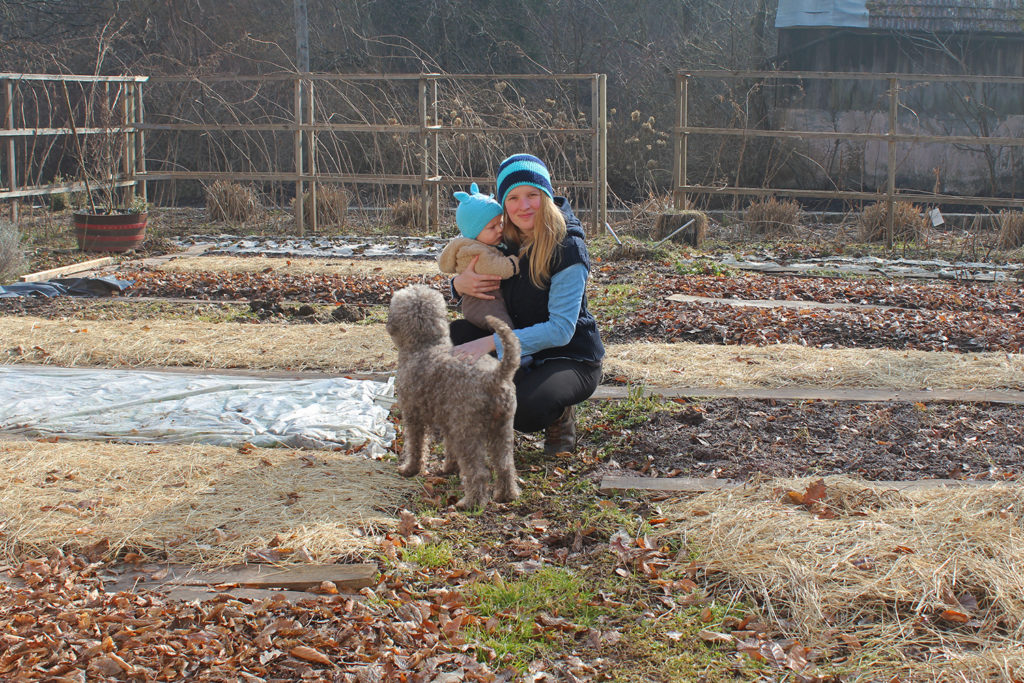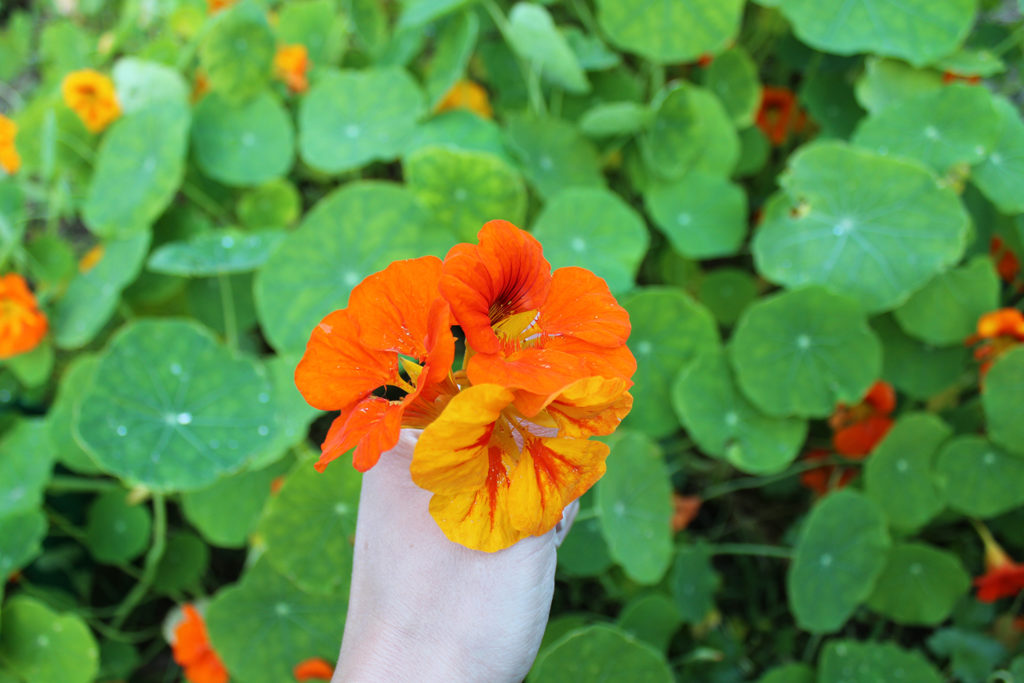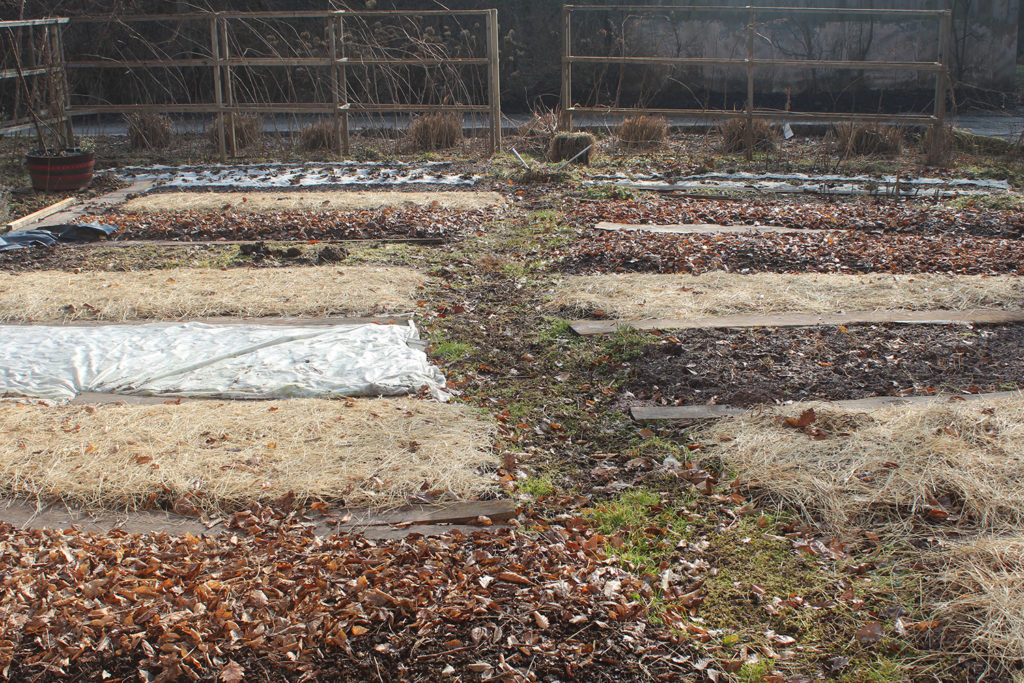Complete self-sufficiency includes many aspects of one’s life from growing your own food to being self-sufficient with electricity, water, and other necessities. And although I would love to one day be completely self-sufficient, I’m taking it one step at a time. So today I’m going to focus on my current goal – being self-sufficient with vegetables.
I’ve been thinking about self-sufficiency for a long time. The first time the idea of not having to go to the store for anything else than oil and salt crossed my mind about 10 years ago. It was the time in 2008 when the global economic crisis occurred. The crisis showed how dependent we are on the goods that await us on the shelves of the stores and how quickly this same good can become inaccessible if we lose our source of income.
With the passing years, my idea of self-sufficiency evolved – I liked the fact that I didn’t have to go shopping for weeks at the time and I was still able to prepare food that was healthy and nutritious. Not to mention how the lack of grocery shopping impacted the size of my wallet.

Back in 2017, I was already able to cover most of my vegetable needs with homegrown vegetables. My gardening adventures were put on hold a bit last year due to my pregnancy and the birth of my first child. But throughout these years the challenge stayed the same – how to alter my lifestyle in a way that I’ll be able to fill my meals with mainly homegrown food? How to grow enough food for two large (and one small) mouths? How to store and preserve all the produce to make it available throughout the winter when the weather here in our little sub-alpine valley isn’t mild enough to allow overwinter our food in the garden?
Although I didn’t write much on here last year I still remained as active as I could in the garden. I’ve spent my time searching for the answers to the questions asked above, deciding on the varieties of vegetables that I wanted to grow and studied the methods of preserving the crops so that they would maintain freshness and taste throughout the winter.

How to start – grow what you eat!
At the beginning of the year, it all began with a list – Aljaz and I took a couple of hours one evening and we wrote down our favorite staple dishes. We ended up with about 20 main courses, 10 soups, 10 salads and 5 desserts that are often found on our plates. Based on these dishes I chose the varieties of vegetables that I want to grow in my garden this year. It happened more than once that in my enthusiasm I planted and grow stuff that no one wanted to eat at the end. To avoid this kind of food waste I started the gardening year with a new mantra – »Grow what you eat!«
I still fully plan to explore new and unusual varieties of vegetables – I’m sure that that will be enough room for everything in the garden.
Growing plants from seed
This year is the first year that I’m growing all of my plants from seed. In previous years I only grew from seed anything that I could direct sow and all the rest was bought as plug plants. This year I’ve already sown my chilies, peppers, eggplants, brassicas, tomatoes and some other special vegetables. I still need to sow my squashes, melons, and flowers.
Because this is my first year growing all of my plants from seed I’m not going to be a smart-ass about it and won’t be writing about it this year. But I’m eagerly writing down all of my sowing dates, germination dates, and other observations so you can expect seed starting post next year.

Vegetable varieties in 2019
Along with my trusted vegetable varieties, I’ll also be growing some new stuff this year. I’ve never grown edible tubers or grains which will find their space in my garden for the first time. Due to the lack of gardening space (about 20 percent of my gardening will be dug up this year because we’ll be adding hydro insulation to our house), I won’t be able to grow potatoes this year. Because I didn’t want to skip the tubers altogether (after all they represent a considerable part of my diet) I opted for more exotic tubers instead. At the end of February, I planted Jerusalem artichokes (sunchokes) and Chinese artichokes. Both are perennial tubers that I hope will be able to get a harvest from in the fall. I’m also planning to grow sweet potatoes in grow bags. I’m also super excited to try my hand at growing grains. I’ll be sowing some corn, amaranth, and sorghum. I really hope that I’ll get a good harvest because these three just might be my favorite new things that I’m growing this year.
The last of garden novelties are edible flowers – along with borage and nasturtiums I also plan to grow pansies, daylilies and other fragrant annuals and perennials. I hope that the flowers will attract pollinators and detract pests.

Prepping the garden beds and direct sowing
Because all the vegetable varieties are not suitable for starting in pots indoors (for example carrots) I went ahead in prepared my garden bed in the autumn. Because I’m slowly transitioning towards no-dig gardening approach I’ll write a short post explaining how I prepared my garden beds and what kinds of mulches I used and why.

Preserving the harvest
Of course, we plan to eat as much of our harvests fresh in the garden to table kind of way. However, I also plan to study and use different techniques for preserving the produce. I’ll try everything from the classic root cellar storage and freezing techniques to pickling, canning and fermenting. My plan is to find the best ways to preserve different vegetable varieties while maintaining or improving their flavor.
My challenge for the year 2019
In the following year of 2019 I plan to grow 80% for our own vegetables (unfortunately we will have to keep buying our potatoes). Since my maternity leave ends in June I’ll also have to find a way to optimize garden in kitchen chores in a way that they won’t take up too much of my time. Because despite the joy and excitement that I find in growing our own food, my first and most in an important role is the role of a mother to Jacob. The little rascal is growing with incredible speed and every day he is learning and discovering new things. I would hate to miss any of this little milestones.
As you can see the year of 2019 will be an exciting one. The seeds are bought, some are already planted and now I can only cross my fingers that I’ll be able to record the whole process on this blog-
Thank you for joining me along my journey and I hope that you’ll follow me into another interesting year.

No Comments